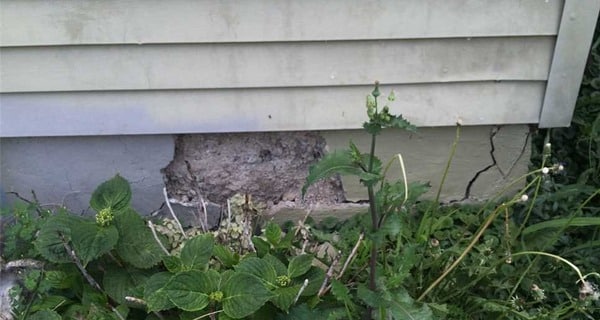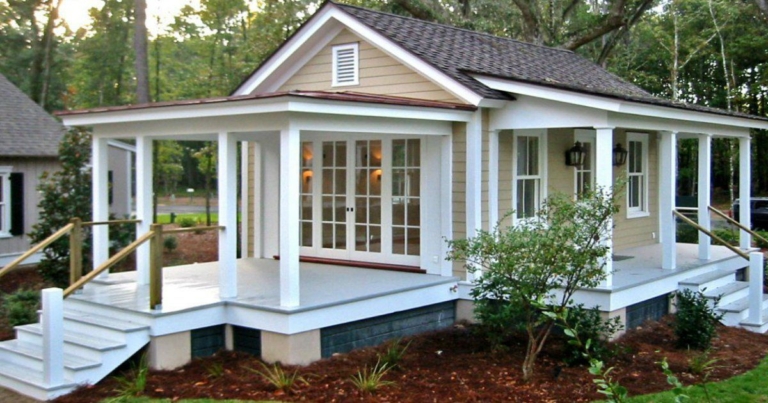5 Problems You Might Face Remodeling Old Homes in Santa Clara County
Until now, you’ve loved everything about your older Santa Clara County home – the location, the craftsmanship, and the architectural details reminiscent of a time past. But, it’s finally time to spring for an upgrade, including the best in modern amenities.…It’s time to remodel this old house!
Now that you’re ready to get started, renovating an older home poses some unique challenges. It’s important to be aware of potential roadblocks and money pits, so here are five problems to look out for before you kick off your older home renovation.
Failing Foundations
Time is the enemy of even the sturdiest foundations. If not properly addressed, a failing foundation can wreak havoc on your remodeling plans. Homes built before the mid-1960’s commonly used cement and cinder blocks to construct foundations. Cinder is less structurally sound than the cement portion of the foundation, increasing the potential for cracks, and subsequently, for water damage.

Courtesy of Ohio Basement Authority
Concrete foundations aren’t immune to cracks either, and are susceptible to spalling (or breaking into smaller pieces) as a result of water finding its way into materials such as brick, concrete, or natural stone. When water seeps into these materials, spalling causes the surface to peel, pop out, or flake off.
Other potential foundation issues may include dry rot, moisture damage in above-ground studs, corrosion, or the leaking of radon. Radon is a naturally occurring radioactive gas that has been identified as the second leading cause of lung cancer in the US. It’s also important to keep an eye out for visible wall cracks that grow over time, cracked tile or concrete floors, or visibly uneven floors. All these issues can be stealthy indicators of deeper foundation problems.
Since the foundation is the main support affecting the structural integrity of your entire home, any suspected foundation or structural problem should be addressed by a qualified design-build remodeler before beginning significant remodeling work.
Non-Code Compliant Wiring
Our appetite for electricity has skyrocketed in recent decades with the proliferation of computers, mobile devices, dishwashers, hair dryers, garbage disposals, and air conditioners. Many older homes are not equipped to handle the amount of electricity needed to power all of these modern amenities at once. And old or insufficient electrical wiring poses a significant safety hazard.

Courtesy of Ask the Electrician.com
To bring your older home’s electrical wiring up to code, it may be necessary to install ground-fault-interrupter (GFI) outlets in your kitchen and bathroom. If an appliance encounters water, the GFI will cut off power immediately. You may also need to upgrade your electrical box to the standard 200-amp capacity (from the old standard amp capacities of 60, 100 or 125-amp) to allow for simultaneous use of your household appliances.
Damaged or Rusted Water Pipes
Sadly, nothing lasts forever – and that includes your home’s plumbing. Check out this general guide to the lifespan of your pipes published by the U.S. Department of Housing and Urban Development:
Plumbing Lifespan:
| Supply pipes (under constant pressure and therefore most likely to cause water damage when they leak) | BrassCopperGalvanized Steel | 40-70+ yrs50+ yrs20-50 yrs |
| Drain lines | ________________Cast ironPolyvinyl chloride (PVC) | 75-100 yrsIndefinitely |
However, just because you have old pipes doesn’t mean you have to replace them right away. Well-maintained pipes often last longer, while insufficiently maintained ones can fail sooner than expected. In areas like Santa Clara County, hard water is also a factor in early plumbing pipe failure.

Courtesy of Gaudette Insurance
Lead
If your home was built in the early 1900s, take this opportunity to check to see if your home has lead pipes. According to the Environmental Protection Agency (EPA), levels of lead measuring greater than 15ppb (parts per billion) are grounds for taking action. However, most scientists agree that the ingestion of lead – at any level – is dangerous to your health and should be avoided at all costs.
Polybutylene
If your home was built between the 1970s and 1990s, your home’s plumbing system may use polybutylene pipes. Over time, chlorine in the water supply can degrade polybutylene pipes from the inside out. This slow erosion of polybutylene pipes over time can cause system-wide failure.
Unwanted Visitors
You may not be the only family who has inhabited your older home for an extended period of time. A wide range of critters including termites, bees, wasps, ants, birds, and rodents may very well have taken up residence in your home, causing unseen damage in the process. A complete inspection — from attic to cellar — for everything from chewed wires to holes in siding and insulation is necessary before remodeling an older house.

It’s also important to make sure there is enough clearance between any dirt and the siding of your home. If the dirt is too close to the building structure, you invite termites and other insect infestations to take hold. Don’t worry, though; your qualified design-build specialist will know what the building code requirements are for your area and will take care to implement them effectively.
Hidden Surprises (Dry Rot)
Very often, you can’t see potential problems with your older home remodel until demolition is fully underway. A common surprise in older homes is the discovery of dry rot. Dry rot is a wood-destroying fungus that can affect both soft and hard woods. Mostly found in damp and humid conditions, dry rot consumes the moisture from dry wood, in some cases, causing major structural damage.

Courtesy of Home Advisor
Dry rot is commonly found on the outside of older homes in areas where your deck attaches to your home, at the joining of perpendicular surfaces, and in wooden window sills. Inside your older home, you may also find dry rot adjacent to leaky pipes or in unvented attic spaces. Other susceptible areas include around the bathtub and toilet in bathrooms, and anywhere wood meets a masonry wall or floor.





